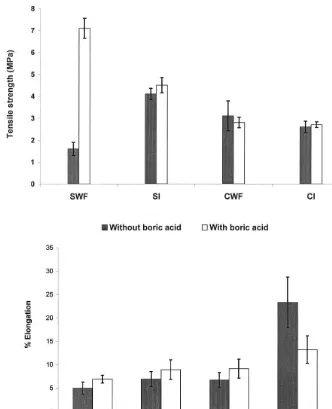Directory UMM :Data Elmu:jurnal:I:Industrial Crops and Products:Vol11.Issue2-3.Mar2000:
Teks penuh
Gambar



Dokumen terkait
The selection of crops to be included in this assessment has been based on data for the current situation (area cultivated, yield, production capac- ity, potential for improvement)
Thixotropic loop determinations for 1% solutions of drum dried, jet-cooked mixtures of cornstarch and Lesquerella gum determined at 25°C.. Lesquerella gum (0%), — up cycle, - - -
Sucrose is widely used in the food industry as such or as precursor of invert sugar through its partial or total hydrolysis (Bussie`re et al., 1990) and in the non food industry, as
Fine chopping of stalk materials significantly influence compacting density and is more prefer- able to heating, because energy requirement for chopping − 25 kJ / kg is one order
This, together with the fact that the acidified plant juice is an excellent medium for par example amino acid producing strains of Corynebacterium glutamicum , leads us to
The mechanical properties of the moulded plastics based on soluble protein black bean (BP) were superior in elongation, tensile strength and low water absorption than the
Comparison of the influence of gauge length on strength of Spanish Broom, Ramie, carbon and glass fibres (according to Eq.. Typical stress-strain diagrams for Spanish Broom and
As regards Italy, the diffusion of cotton cultivation dates back to about 1850 when the Italian textile industries, like those in other European countries, had a crisis scarcity of